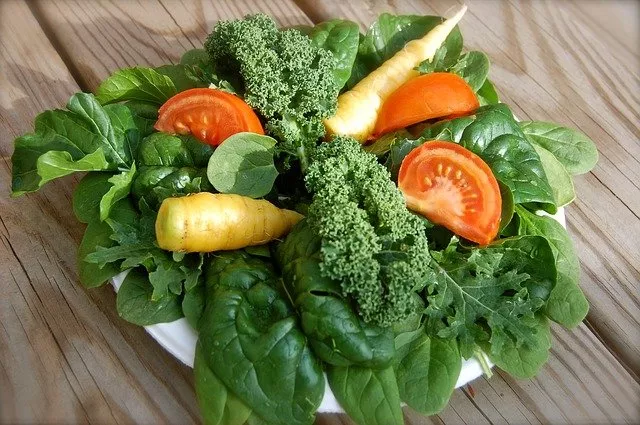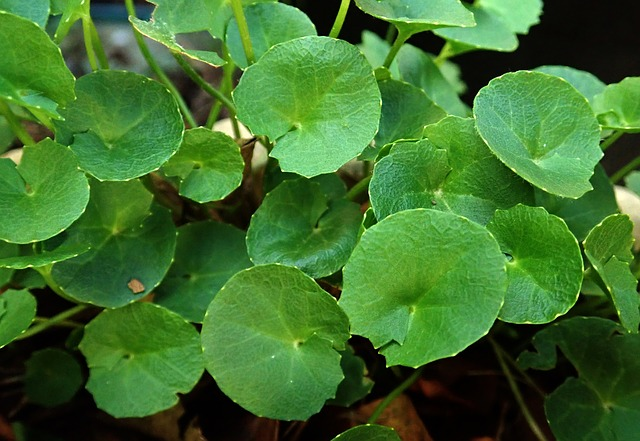Top Green Leafy Vegetables Sri Lankans eat.

Leafy green vegetables are an important part of a healthy diet. They ensure beautiful skin and hair and they are rich in vitamins, minerals, and fiber but low in calories. Eating a diet rich in leafy greens can offer numerous health benefits. In this article, you can read about the top Green Leafy Vegetables that we eat in Sri Lanka.
1. Gotu kola

The scientific name of Gotu kola is Centella asiatica, and it is the most popular Green Leafy Vegetable in Sri Lanka. It is a nutritionally important plant and also considered to be a medicinal plant in traditional medicine due to its high amounts of medicinally important triterpenoids and beneficial carotenoids. It is consumed in the form of salad(Gotukola sambol), drink, kanji (juice mixed with ground rice & coconut milk), and with other food items like roti. It is known to contain Vitamin C & B, Protein, Important minerals, and some other phytonutrients such as flavonoids, volatile oils, tannins, and polyphenol. The known health benefits of Gotu kola are antidiabetic, wound-healing, antimicrobial, memory-enhancing, antioxidant, and neuroprotective activities. It's thought to increase hair length and stimulate hair growth, possibly by increasing blood circulation to the scalp. On my website, you will find ways to prepare Gotu kola in different ways.
2. Mukunnuwenna

Alternanthera sessilis is the scientific name of the Mukunuwenna plant. It grows in wetter places and is 30cm tall. It is used as a vegetable especially in Sri Lanka and some Asian countries. Edible parts are leaves and young stems which we, Sri Lankans consume by stir-frying with little oil and coconuts, we call it Malluma, as kanji or as a curry. You can find the recipes on this website. It is used in Ayurveda to treat eye diseases, skin rashes and burning sensation of feet. Related medicinal properties are Reduces aggravation of pitta dosha, Increases production of milk [lactation], Improves hair growth
3. Kankun
Another popular green leafy vegetable in Sri Lanka is Kankun. Its scientific name is Ipomoea aquatica. It grows in water or moist soil. It has trumpet-shaped flowers that are white in color and have a purple center. Its stems are 2–3 meters (7–10 ft) or more long, rooting at the nodes, and they are hollow and can float. Leaves are arrowhead-shaped. These are also used in Traditional medicine, treating Diabetes mellitus, Ringworm infestation, Delirium. Kankun is very low in calories and fat and rich in Vitamin A, antioxidants and minerals. Fresh Kankun leaves carry abundant levels of phenolic antioxidants such as carotene-β, lutein, xanthin, and cryptoxanthin. In addition to that, raw & fresh Kankun leaves carry excellent levels of ascorbic acid (Vitamin C) and Vitamin A. Because of the low calorie, low fat and rich antioxidant property, Kankun is being recommended by nutritionists in weight reduction and cholesterol controlling programs. Kankun greens are abundant sources of health benefiting nutrients that are consumed on a regular basis to prevent osteoporosis, iron deficiency anemia, and vitamin-A deficiency, and are believed to protect from cardiovascular diseases, and colon & prostate cancers. But it is better to consume the ones grown in your home garden or a known place because the sanitary condition and toxicity of the water in which Kankun is grown determine the safety of consuming this plant. It is not a good idea to eat raw Kankun without cooking it. Devilled (fried) Kankun is very popular in Sri Lanka.
4. Anguna kola/ kiri anguna kola
The scientific name of Anguna kola is Wattakaka volubilis. There are two types of Anguna kola, those are “Thiththa anguna” which has a bitter flavor and “Kiri anguna” which is not bitter in taste. Related medicinal properties of Anguna kola are detoxifying, Lacto-purifier and enhancer and Mild laxative. Anguna kola is also used in Ayurvedic medicine for treating some diseases.
5. Ambarella dalu (Young leaves of Ambarella)

Spondias cytherea is the Scientific name of Ambarella. Ambarella fruit is more popular than its young leaves. Ambarella fruit is eaten as raw and as a curry. You can make Ambarella juice, and chutney from its fruit too. Young leaves of Amberella are also tasty and have lots of health benefits. It is consumed as a sambol (salad) without adding lime. When preparing sombola we usually add lime, but when making “Amberella dalu sambolaya” there is no need of adding lime because the leaves themselves are sour in taste. Indeed it is delicious as a sambola (salad). Ambarella leaves contain flavonoids, saponin, and tannins. Ambarella fruit and the leaves contain Vitamin C which helps to metabolize cholesterol. It is said that the leaves are good for diabetic people as well.
6. Wel penela kola
The scientific name of Welpenela is Cardiospermum halicacabum. It is a climbing vine and it is used in traditional medicine in Sri Lanka. It is consumed as porridge and as a Mallum (Coconut stir-fried). When Malluma is made it is stir-fried with ghee or butter which gives good taste. The health benefits of Welpenela are assisting digestion, promoting appetite and stimulating sexual desire, which could help in the back and joint pain. You can find many Ayurvedic products that are produced by Welpenela such as Welpenela syrup, capsule, herbal porridge mix, etc.
7. Hathawariya / Wild asparagus
|
Hathawariya is also a popular Green leaf in Sri Lanka. It is also known as the Queen of herbs. The scientific name of this plant is Asparagus racemosus. It is a climbing vine and has needle-like leaves. The plant flowers during February–March leaving a mild fragrance in its surroundings and by the end of April, fruits can be seen with attractive red berries. Hathawariya is a popular herb used in indigenous medicine in Sri Lanka. This herb has the ability to increase fertility and vitality therefore it is used for Ayurvedic treatments in the female reproductive system. It balances the hormonal system of women and also it is used to increase milk secretion in lactating women. There are benefits for the reproductive system of men as well. The plant may be used in cases of sexual debility and impotence. Many medicinal qualities of this plant have been associated with phytonutrients present in its roots, and especially one type of phytonutrients called saponins. In Sri Lanka, Hathawariya is consumed as porridge (herbal soup) and it cannot be eaten as a Sambola or as a Mallum. There are Hathawariya products that have been made of the root of this valuable herb. |
8. Thembu
The scientific name of Thembu is Costus speciosus. The most popular health benefit of Thembu is its ability to lower the blood sugar level, which is good for people with diabetes. According to Ayurvedic specialists, Thembu leaves can stimulate appetite, control bile, treat skin diseases. Not only the leaves are used in Traditional medicine but also its roots are used in Ayurveda to treat intestinal worms, constipation, skin rashes and wheezing. We consume Thembu leaves as Sambola(salad) or as Mallum (stir-fried with coconut).